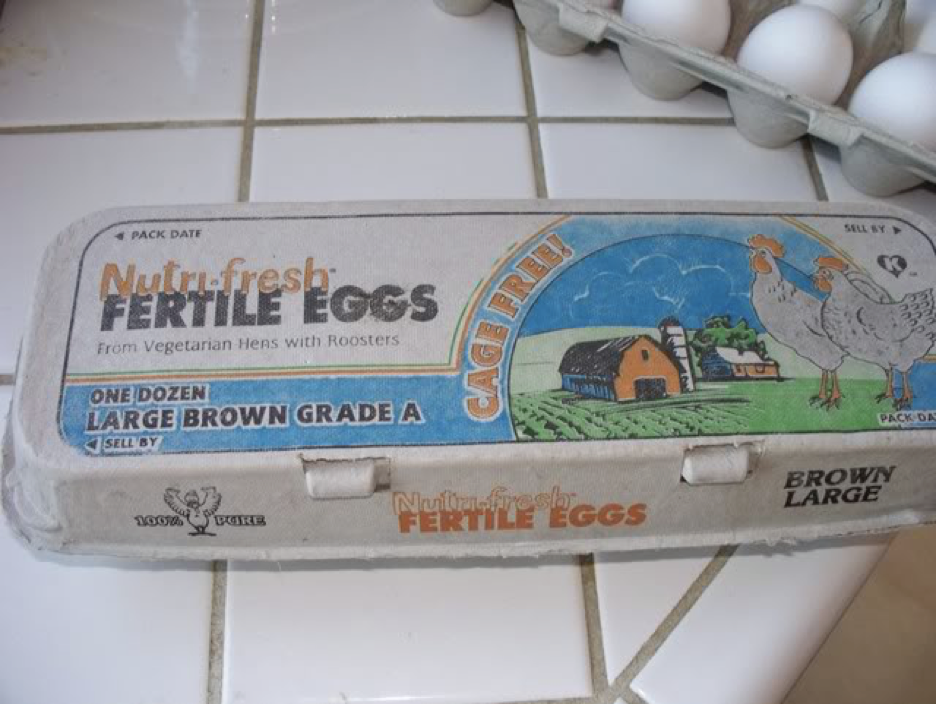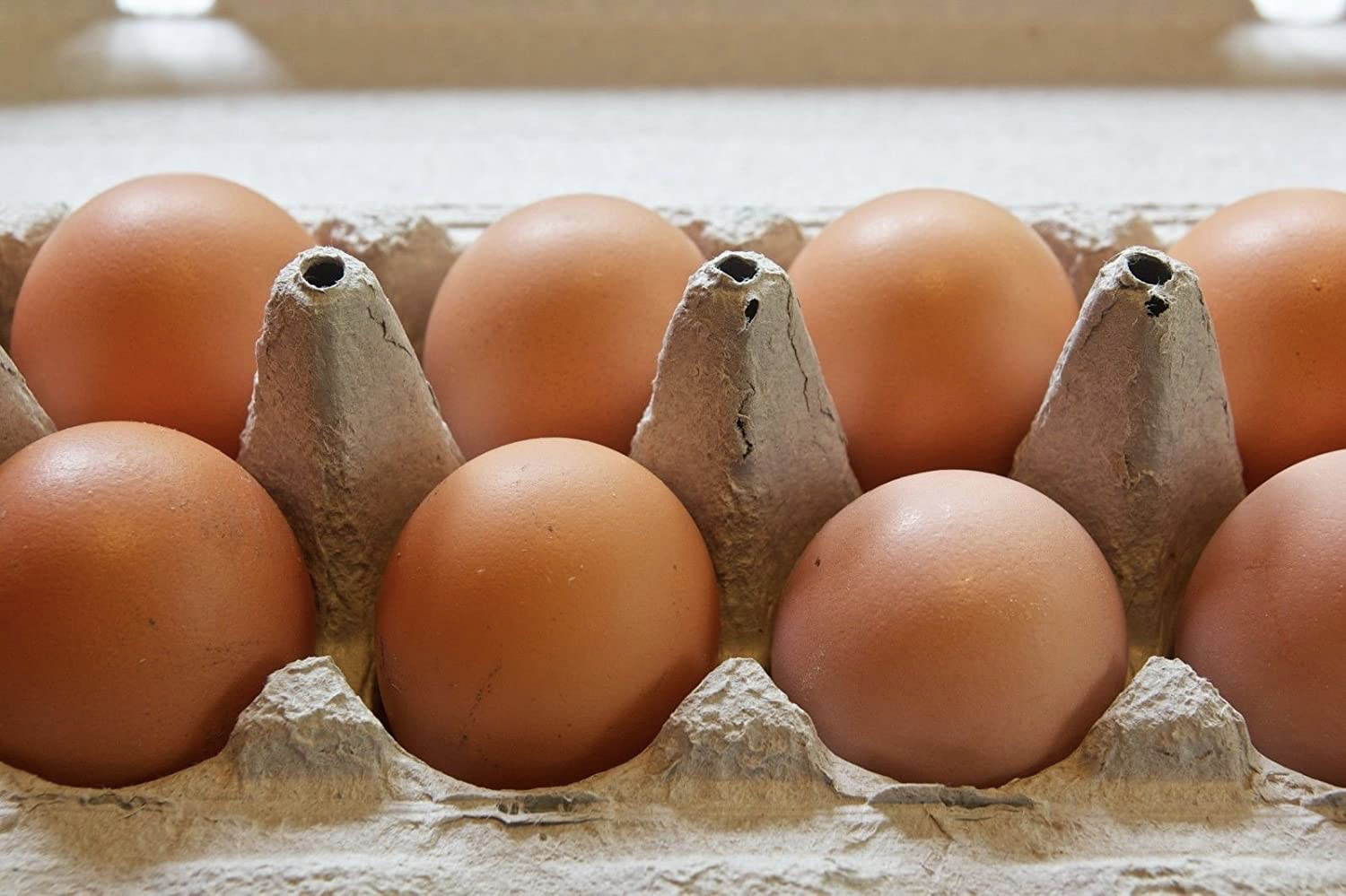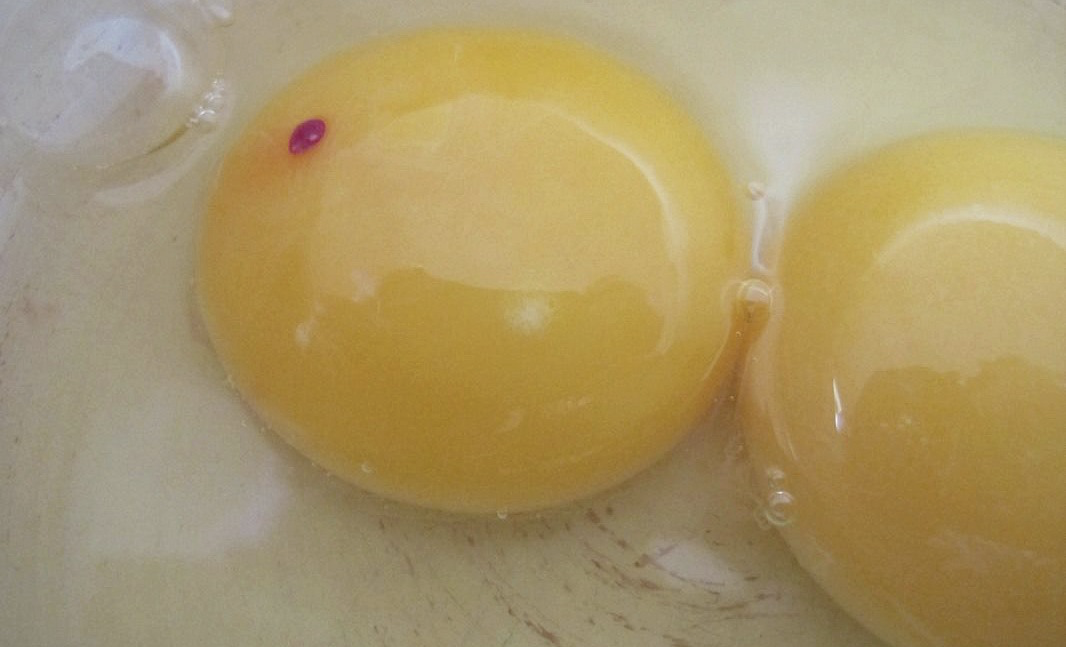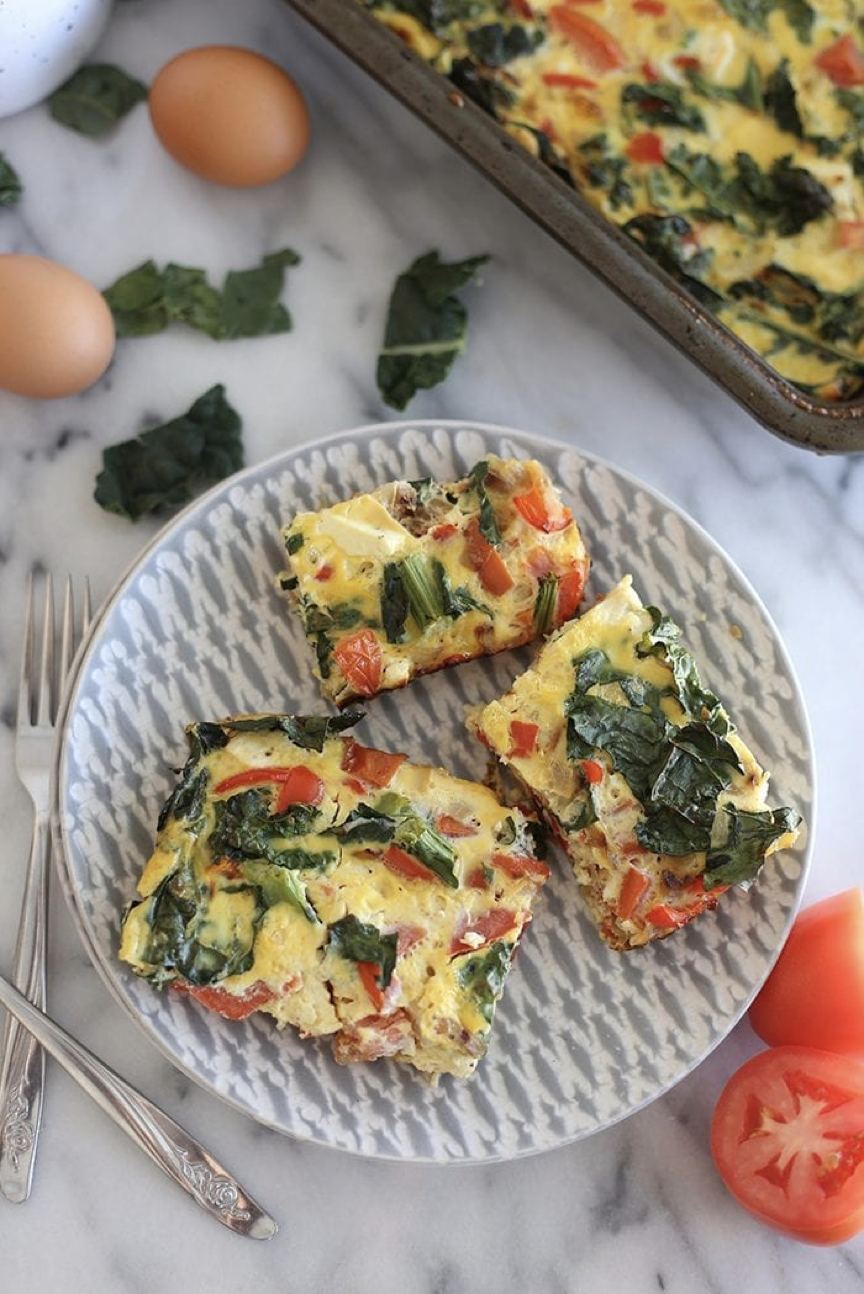Eggs: 101
Who knew we’d see so many different types of commercial chicken eggs in our grocery stores? Back in the day, you bought a dozen eggs and they were white. Today you can buy (besides the usual white eggs):

Eggs are a nutrition powerhouse. The basic white egg is rich in folate, Vitamin B12, omega-3 and omega-6 fatty acids, eggs are also a good source of the antioxidant, lutein. But with all the choices on the shelves, it can get confusing. Is one egg really better than another?
A good case in point are the highly touted fertilized eggs. Many health and whole foods stores claim they’re healthier. However, the research I read says the chicken's embryo in a fertilized egg is so small that the amount of extra nutritional value it offers is inconsequential. This is good to know because “fertilized eggs” cost more. We can save some money here.

And has anyone ever told you brown eggs are more nutritious and flavorful than white eggs? Don’t believe it. Though some chickens that lay brown eggs produce more nutritious and flavorful eggs than the breeds that lay white eggs, the opposite is true just as often. Therefore, shell color is not an indicator of quality.
Eggshell color marketplace preference is regional: In Boston the brown egg is more popular, whereas in most other areas of our country the white is the top choice. Good to know, because again, brown eggs tend to cost more (sold under the idea that they’re somehow “special”). Same deal—save your money.

According to the Egg Nutrition Center, the nutritional value of an egg is affected ONLY by the feed. In other words, specialty eggs such as (such as those mentioned above) provide the same nutritional value as the regular varieties if their feeds are the same. It’s all about marketing and the bottom line—profits, profits, profits.
Lastly, one other thing (good to know but not related to nutrition): Egg yolks with blood spots. While sort of gross, it’s OK. A yolk membrane can pick up blood spots as it travels down the hen's reproductive tract before the surrounding albumen (egg white) yolk. The blood spots are harmless blemishes and, contrary to some food books, do not indicate fertilization, nor do they cause food poisoning. Good to know because we can save some money here, too. No more throwing those blood spotted eggs out. They’re harmless, but if you don’t like the idea of eating them scrambled, fried, etc., then just use them in your cake or cookie batter.

All this egg talk has made me hungry. So, let’s end this basic egg tutorial with a wonderful egg recipe we’ve used in our family for decades. It’s a veggie-based egg gratin. Quick and easy, it can be made the night before you want to serve it. Here’s a toast to a healthy new year and saving some money in the egg aisle!


12 large eggs
1 small onion diced
1 green bell pepper diced
1 cup quartered cherry tomatoes (or two large tomatoes, diced)
1 cup roughly chopped kale
1 cup roughly chopped spinach
1/2 cup chopped broccoli or Brussels sprouts
3/4 cup sliced mushrooms
1/2 cup crumbled or grated cheese (feta is good)
1 cup milk
salt to taste
pepper to taste
olive oil for sauteeing
butter for prepping baking pan
Directions:
Add Recipe to Cook'n
- Brown eggs
- Cage-free eggs
- Pasture-raised eggs
- Free-range eggs
- Omega-3 enhanced eggs
- Organic eggs
- Vegetarian eggs

Eggs are a nutrition powerhouse. The basic white egg is rich in folate, Vitamin B12, omega-3 and omega-6 fatty acids, eggs are also a good source of the antioxidant, lutein. But with all the choices on the shelves, it can get confusing. Is one egg really better than another?
A good case in point are the highly touted fertilized eggs. Many health and whole foods stores claim they’re healthier. However, the research I read says the chicken's embryo in a fertilized egg is so small that the amount of extra nutritional value it offers is inconsequential. This is good to know because “fertilized eggs” cost more. We can save some money here.

And has anyone ever told you brown eggs are more nutritious and flavorful than white eggs? Don’t believe it. Though some chickens that lay brown eggs produce more nutritious and flavorful eggs than the breeds that lay white eggs, the opposite is true just as often. Therefore, shell color is not an indicator of quality.
Eggshell color marketplace preference is regional: In Boston the brown egg is more popular, whereas in most other areas of our country the white is the top choice. Good to know, because again, brown eggs tend to cost more (sold under the idea that they’re somehow “special”). Same deal—save your money.

According to the Egg Nutrition Center, the nutritional value of an egg is affected ONLY by the feed. In other words, specialty eggs such as (such as those mentioned above) provide the same nutritional value as the regular varieties if their feeds are the same. It’s all about marketing and the bottom line—profits, profits, profits.
Lastly, one other thing (good to know but not related to nutrition): Egg yolks with blood spots. While sort of gross, it’s OK. A yolk membrane can pick up blood spots as it travels down the hen's reproductive tract before the surrounding albumen (egg white) yolk. The blood spots are harmless blemishes and, contrary to some food books, do not indicate fertilization, nor do they cause food poisoning. Good to know because we can save some money here, too. No more throwing those blood spotted eggs out. They’re harmless, but if you don’t like the idea of eating them scrambled, fried, etc., then just use them in your cake or cookie batter.

All this egg talk has made me hungry. So, let’s end this basic egg tutorial with a wonderful egg recipe we’ve used in our family for decades. It’s a veggie-based egg gratin. Quick and easy, it can be made the night before you want to serve it. Here’s a toast to a healthy new year and saving some money in the egg aisle!

Easy Egg and Veggie Gratin
Yield: 12 servings
Ingredients:
12 large eggs
1 small onion diced
1 green bell pepper diced
1 cup quartered cherry tomatoes (or two large tomatoes, diced)
1 cup roughly chopped kale
1 cup roughly chopped spinach
1/2 cup chopped broccoli or Brussels sprouts
3/4 cup sliced mushrooms
1/2 cup crumbled or grated cheese (feta is good)
1 cup milk
salt to taste
pepper to taste
olive oil for sauteeing
butter for prepping baking pan
Directions:
1. Grease a 9x13 casserole pan with oil or butter.
2. Preheat oven to 400 degrees F.
3. Add a little olive oil to a skillet; saute onion until translucent (about 3 mins).
4. Add all other vegetables and cook for one more minute.
5. Crack eggs into a large mixing bowl. Whisk well.
6. Add in milk and stir.
7. Add in sauteed vegetables, cheese, salt and pepper; stir to combine.
8. Pour mixture into casserole pan; bake for 30 mins or until cooked all the way through.
9. Let stand for 10 minutes before slicing.
NOTES: It is possible to use non-dairy milk if you prefer. It’s also possible to omit cheese if you want a dairy-free meal.
2. Preheat oven to 400 degrees F.
3. Add a little olive oil to a skillet; saute onion until translucent (about 3 mins).
4. Add all other vegetables and cook for one more minute.
5. Crack eggs into a large mixing bowl. Whisk well.
6. Add in milk and stir.
7. Add in sauteed vegetables, cheese, salt and pepper; stir to combine.
8. Pour mixture into casserole pan; bake for 30 mins or until cooked all the way through.
9. Let stand for 10 minutes before slicing.
NOTES: It is possible to use non-dairy milk if you prefer. It’s also possible to omit cheese if you want a dairy-free meal.
Recipe formatted with the Cook'n Recipe Software from DVO Enterprises.
Sources:
- www.kqed.org
- www.backyardchickens.com
- www.amazon.com
- www.firstforwomen.com
- www.thehealthymaven.com
 Alice Osborne
Alice Osborne
DVO Newsletter Contributor since 2006
Email the author! alice@dvo.com
